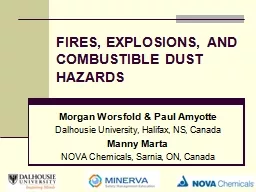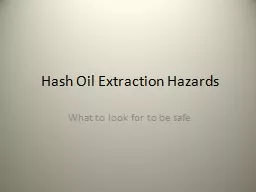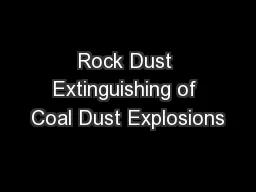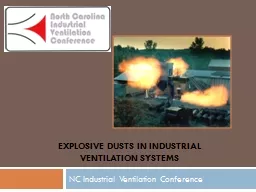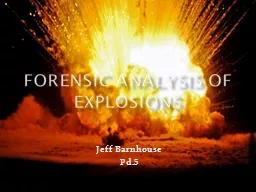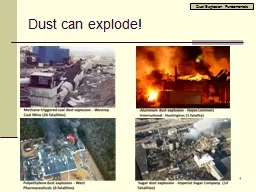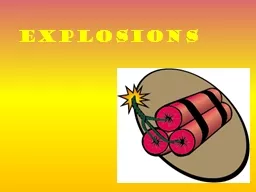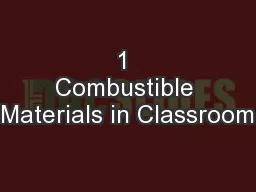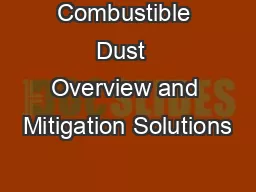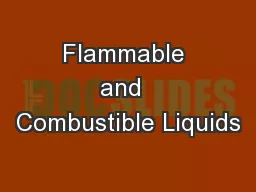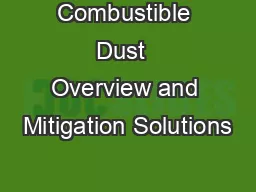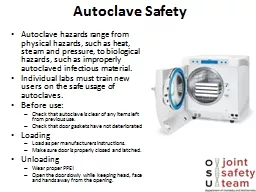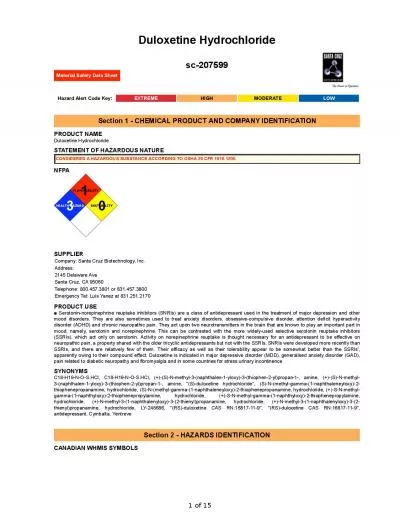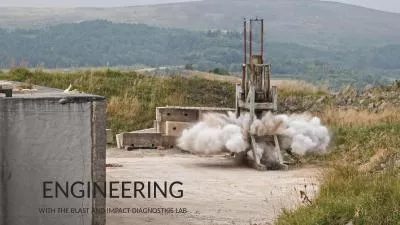PPT-FIRES, EXPLOSIONS, AND COMBUSTIBLE DUST HAZARDS
Author : mitsue-stanley | Published Date : 2016-06-12
Morgan Worsfold amp Paul Amyotte Dalhousie University Halifax NS Canada Manny Marta NOVA Chemicals Sarnia ON Canada Module Basics Scope Fires explosions and combustible
Presentation Embed Code
Download Presentation
Download Presentation The PPT/PDF document "FIRES, EXPLOSIONS, AND COMBUSTIBLE DUST ..." is the property of its rightful owner. Permission is granted to download and print the materials on this website for personal, non-commercial use only, and to display it on your personal computer provided you do not modify the materials and that you retain all copyright notices contained in the materials. By downloading content from our website, you accept the terms of this agreement.
FIRES, EXPLOSIONS, AND COMBUSTIBLE DUST HAZARDS: Transcript
Download Rules Of Document
"FIRES, EXPLOSIONS, AND COMBUSTIBLE DUST HAZARDS"The content belongs to its owner. You may download and print it for personal use, without modification, and keep all copyright notices. By downloading, you agree to these terms.
Related Documents

